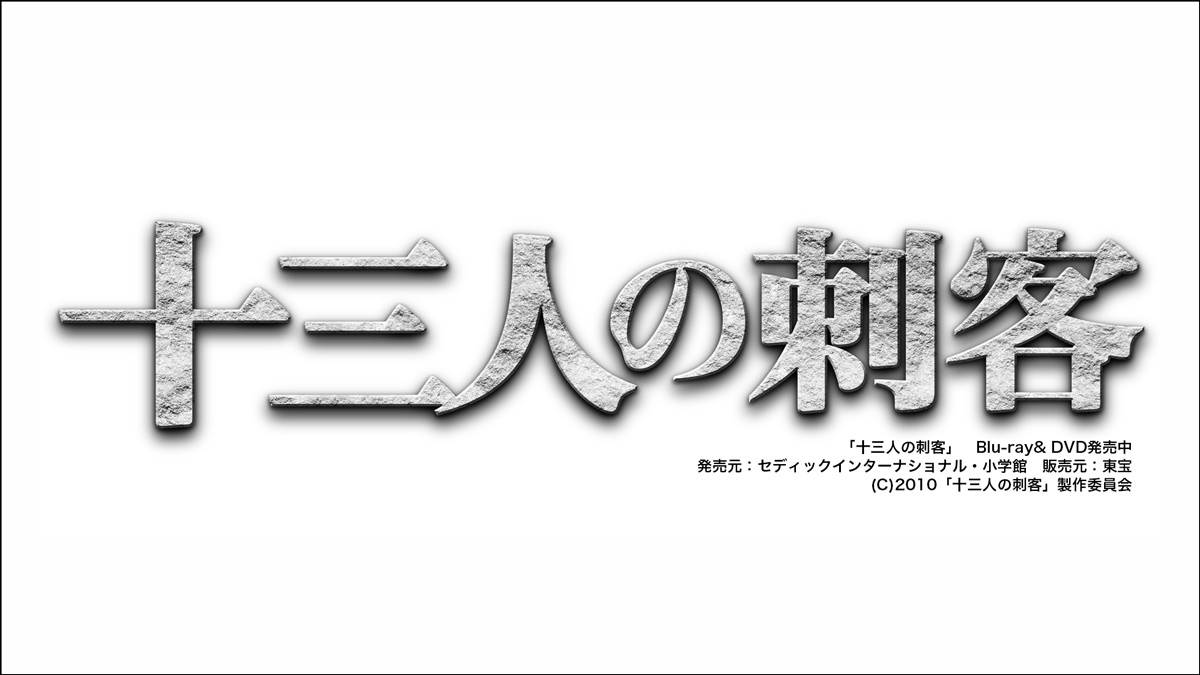
“Thirteen Assassins” Jim Jarmusch was also intoxicated! ? Genealogy of group conflict period dramas
2017.10.12
"Thirteen Assassins" synopsis
Late Edo period. The tyranny of Matsudaira Naritsugu, the younger brother of the shogun Ieyoshi and the lord of the Akashi domain, was astounding. Qi Shao is a man who will soon be appointed to the role of Rojyu. Toshitoshi Doi, an elder statesman who is concerned about the survival of the shogunate, gives a secret order to Shinzaemon Shimada, a man who has known him well, to assassinate Saisho. Immediately, Shinzaemon gathered together 11 men, including his nephew Shinrokuro, and organized an assassination squad of 13 people, including Koyata Kiga, a mountain folk who would later join, and devised an elaborate plan. To go. However, Saisha's confidant, Kito Hanbei, also shrewdly sensed the movement and made careful preparations to protect his precious lord...
Index
- An endless battle that changed the history of historical dramas.
- A cult masterpiece that inherits the spirit of the collective conflict period drama ``Hisatsu!'' Ⅲ
- The carnage catharsis of “The Great Bodhisattva Pass” was highly praised by Jarmusch.
An endless battle that changed the history of historical dramas.
The highlight of Takashi Miike's version of ``The Thirteen Assassins'' is the 50-minute fierce battle to the death at the climax, but even in the original 1963 version , the final battle lasted 30 minutes.
In Miike's version, there are 13 assassins and 300 Akashi feudal retainers, which is an incredible number, but in the original version there are 53. However, as I watched the never-ending battle to the death, I could only imagine that there were definitely more than 53 people. The same is true for the 1990 TV drama version, which is relatively short at 19 minutes, but the assassin group and the Akashi clan keep fighting endlessly until the viewer is exhausted.
1963's ``The Thirteen Assassins'' is generally considered to be a masterpiece that established a new genre of ``group conflict period dramas'' in film history. In ``Group Conflict Period Dramas,'' instead of swordsmen engaging in one-on-one duels, groups of people, each with their own goals, clash against each other. It is, so to speak, a team battle in a historical drama.
After ``Thirteen Assassins'', Eiichi Kudo continued to work on period dramas with similar themes, such as `` Daisatsu '' (1964) and `` Eleven Samurai '' (1967). In addition, in `` 17 Ninjas '' (1963) and `` Ninja Hunting '' (1964), which are considered to be one of the ``group conflict period dramas,'' Hiroki Matsukata's real father, who dominated Miike's version of ``Thirteen Assassins,''・You can watch Jushiro Konoe's amazing sword fights.
The ``Group Struggle Period Drama'' was an attempt to strip away the nostalgia and heroism from historical dramas. In fact, in ``Thirteen Assassins,'' Eiichi Kudo didn't use detailed sword fights, but simply had the actors slash each other casually. Even a samurai who has dedicated himself to the way of the sword is helpless when surrounded by a group, and even if a group surrounds one person, he will be unable to do anything if he is frightened by the prospect of being cut down.
He compares the difference between traditional period dramas, which feature brilliant shambara, and ``group conflict period dramas,'' to the difference between the romantic mafia movie `` The Godfather '' (1972) and the dry violence of `` Goodfellas '' (1990). I would like to try this, but would you all agree?
A cult masterpiece that inherits the spirit of the collective conflict period drama ``Hisatsu!'' Ⅲ

